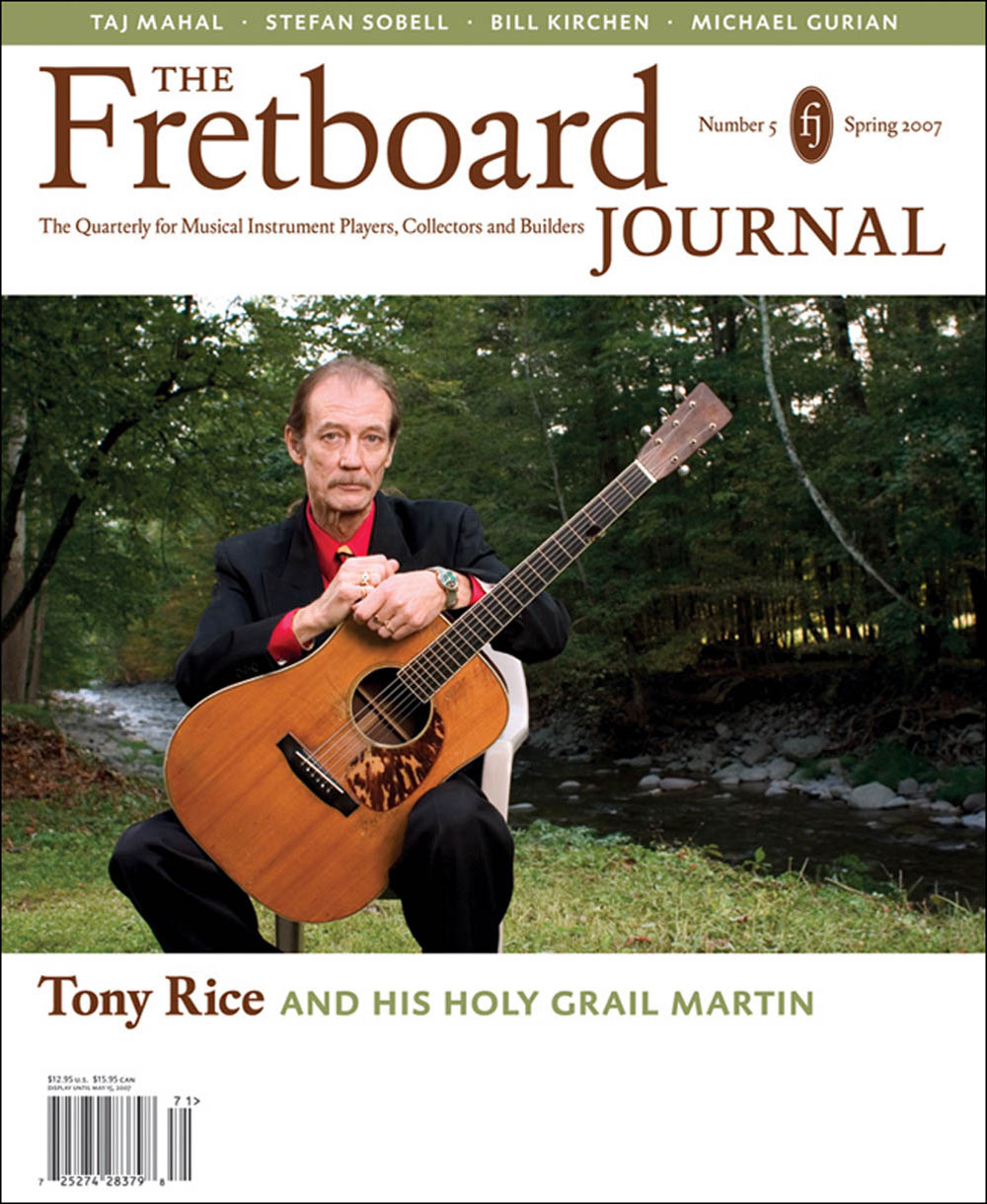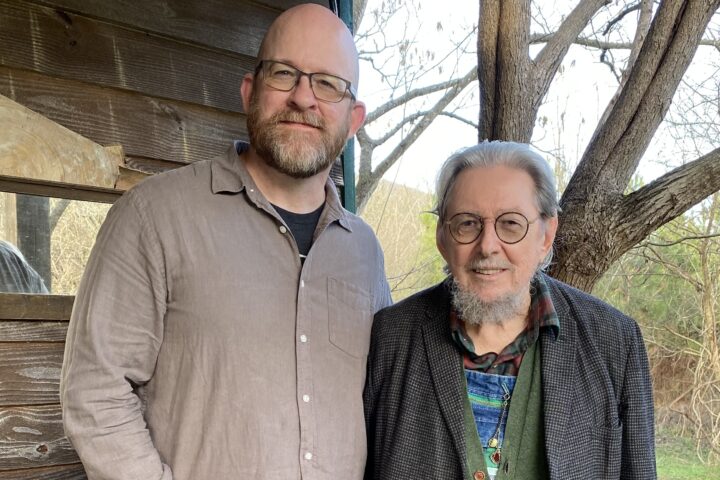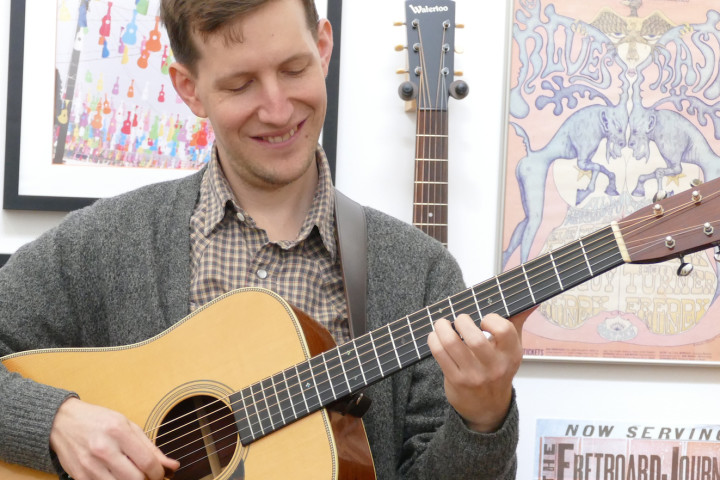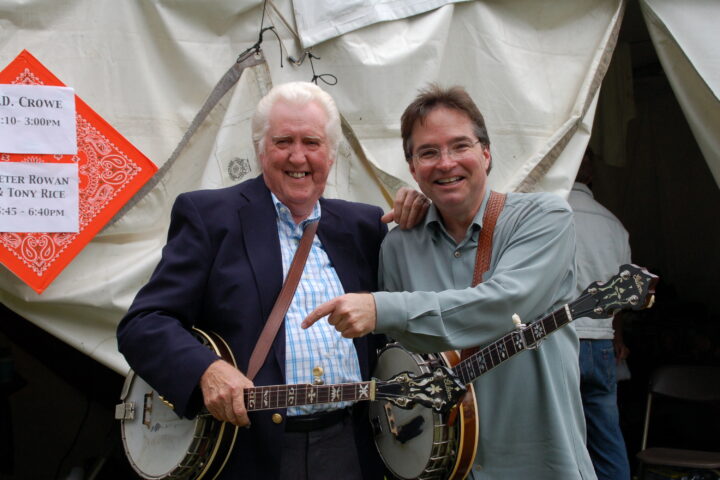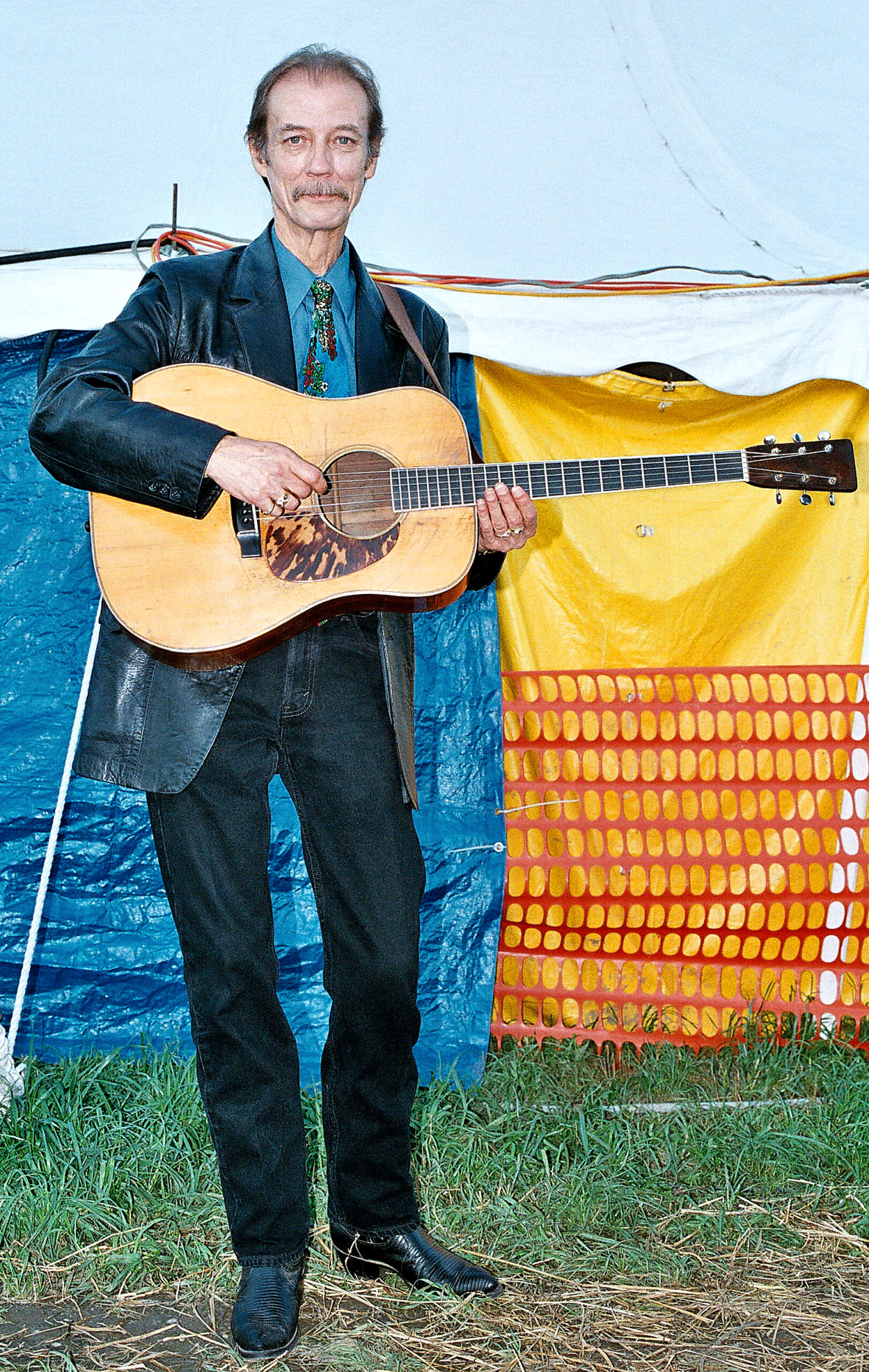
He looked like a pilot.
He had a pilot’s moustache and the tailored suits. The all-knowing half-smile. He wore a vintage Accutron watch around his wrist (the ultimate statement piece for a horology-leaning, engineer-minded type… the same watch the Mercury 7 astronauts wore) and there was often a cigarette perfectly cradled around his fingers. As he got older, he wore a gold ring or two (or three), presumably the spoils of some former barnstorms. He was quick to take a picture with adoring young students and offer words of encouragement, giving them their token wings. He looked confident, even under pressure.
And, to bluegrass fans, Tony Rice was a pilot. He flew an entire music genre to new places with his mastery of seemingly every fret and every note that his Martin guitar could produce. He knew the cockpit of the “Antique” D-28 (formerly Clarence White’s, but you probably already know that) like the back of his hand. And he took one of the most traditional forms of music ever, bluegrass, and somehow paid homage to its roots while also navigating its future – acrobatic solos; insanely fast flatpicking; covers from afar (Dylan, Lightfoot, Randy Newman, Tom Waits!); duos, trios and quartets – with incredible moments of jazzy improvisation all along the way. Somehow, in every setting, he always returned us safely back home, all the better for it.
Last, but not least, like any good pilot, Rice made his crew rise to the occasion. Tony solo was sublime; Tony in a band was otherworldly – the whole rising tide lifts all boats analogy coming to life. All those collaborations, all those bands (someone really should draw a family tree of various performance lineups, I’ll gladly publish it), paving the way for the Bryan Suttons and the Punch Brothers and Sierra Hulls and Hawktails and Billy Strings of the world. Everything he played still feels fresh today. Thankfully, beyond the official records, there are dozens of legendary live clips floating around on YouTube that we can obsess over.
Rice died in his North Carolina home on Christmas morning, 2020. The worst news imaginable to acoustic guitar fans around the world on what has been pretty much the worst year ever for everyone.
Just two months earlier, our other guitar deity, Eddie Van Halen, passed away. For a lot of us, EVH and Tony Rice were the giants bookending the Mount Rushmore of Guitar (throw B.B., Django, Segovia and Jimi in the middle and call it a day). Just like Van Halen, Rice influenced thousands of future players with his imaginative solos. Also like EVH: Rice made everything seem effortless and fluid, even when it clearly wasn’t.
Or course, being guitar geeks, it’s easy for us here at the Fretboard Journal to forget about the other elephant in the room: Rice was just as good at singing as he was guitar! His voice was impeccable. It was, at the risk of sounding simplistic (I was never any good at describing vocals), pretty. In his prime, he had some sort of internal tuning fork (just like his cherished Accutrons) going on in his head. There was no bluegrass barking, ever, only smooth restraint and beauty and harmonies. He came to the barn raising with a razor-sharp Japanese chisel.
If Rice’s resume was a double-threat of guitar and singing, his output was a triple (or is it quadruple?) threat: bluegrass, folk and jazz. His bluegrass mastery is a given. But listen to his cover of Ralph McTell’s “Streets of London” on Church Street Blues? It’s as folk as any John Denver recording. And what else can you call “Summertime” on the legendary Pizza Tapes recordings featuring Rice, Jerry Garcia and David Grisman but jazz? Whenever he played, genres blurred, but the music never suffered or became clichéd from his experimentation. It just somehow became more refined, more Tony Rice. River Suite for Two Guitars, his duo album with fellow Grisman Quintet member John Carlini, was perfection. Some 25 years later, every acoustic guitar duo recording still sort of pales in comparison.
Since this is a guitar magazine with a fixation on gear, we can’t forget Tony’s Excalibur, which only added to his aura. Though guitarists of a certain age may remember his Ovation ad with a chuckle, Rice was mostly about one guitar, his often-copied 1935 Martin D-28, serial number 58957. (Talk about famous: Can you even think of any other guitars simply by their serial number?) Formerly owned by Clarence White of the Byrds / Kentucky Colonels, the “Antique” has been played-to-death, abused, driven over, shot at, highly-modified and, by at least a few accounts, only sounded truly great when Tony was playing it. Its enlarged soundhole is now an option from at least a handful of guitar companies, including Bourgeois, Huss & Dalton, Collings, Martin (of course), and the Santa Cruz Guitar Company, who for decades have produced a Tony Rice signature model. Rumors abound around who did what to the Martin over the years, if that striking tortoiseshell pickguard is from an actual tortoise, on-and-on…
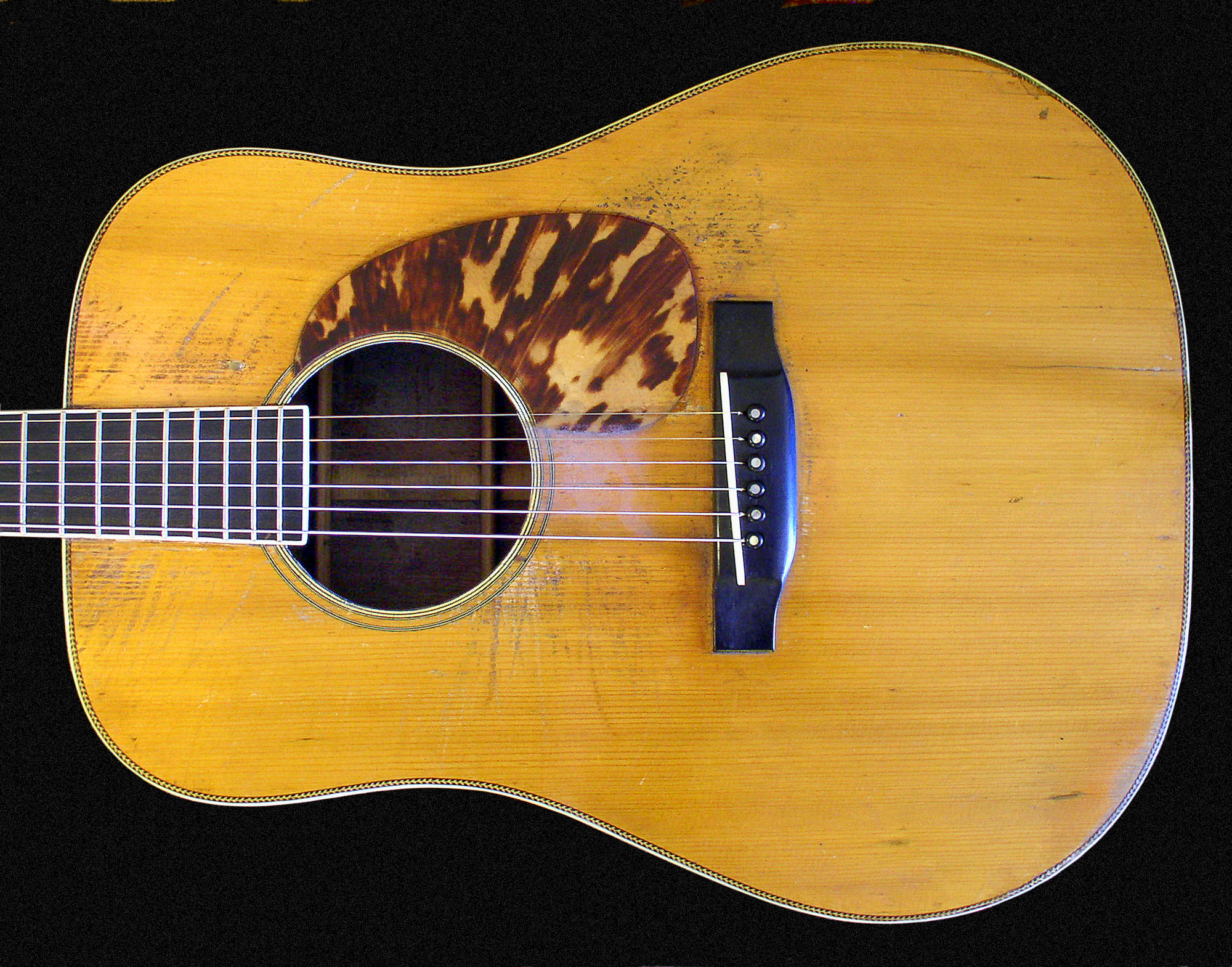
In 2005, our first year of publishing, we decided to set the record straight. Rice was, of course, on our wishlist of subjects before our first issue even came out. The Fretboard Journal’s Art Dudley (another great talent who passed away this year) landed an interview with the guitarist in upstate New York for what would be our fifth issue’s cover story.
As with numerous Rice appearances in the second half of his career, there was an element of chance that Rice would even show up at the venue. Do we bother hiring a pro photographer in case he’s a no show? We took the risk. What’s our backup cover story? We had none.
We didn’t need to worry. Rice and Dudley did meet. And it was, arguably, one of the best Rice interviews, ever. In Dudley, a full-time audiophile journalist merely dabbling in geeky guitar detective work, Rice found a perfect match. They were peers on some level, guys who texted regularly about high-end audio equipment more than they did string gauges or picking techniques. The always-thorough Dudley captured what I think is the definitive story of Rice’s oft-copied guitar for our pages. You can read it here in its entirety. It remains an inspiration for us here at the tiny FJ office whenever we assign future stories.
As years went by, long after the actual print issue sold out, that article grew in popularity, selling on eBay for far more than the original edition’s cover price (we eventually posted it online and it remains one of our most visited stories on fretboardjournal.com). Selfishly, I always hoped for a follow-up piece. Sure, we covered the Martin at length. But what about a story where Critter Eldridge or one of Rice’s other disciples interviewed him on composing… or listening? Or maybe a piece just on the cult of Accutron that he launched in bluegrass circles? (Musicians such as Wayne Henderson, Kenny Smith, Brandon Lee Adams, and others can all be spotted donning the watch, thanks in large part to Tony, who dabbled in repairing the timepieces when he could no longer gig.)
I had a Post-it with Tony’s email and cell tacked above my desk for nearly 10 years. A few years back, I mustered the courage to send an email with the watch story angle… no reply. But, knowing others who knew Tony far better than I, I really didn’t expect one. The Post-it is still there today. I can’t take it down.
Of course, there was a valid reason no one heard from Rice. He’d been battling muscle-tension dysphonia, which ruined his voice, and arthritis, which ruined his guitar playing. He was struggling. In 2013, he gave a now famous acceptance speech at the IBMA Hall of Fame and, for the first time in forever, sounded like he might possibly be on the mend. It was tantalizing prospect and it felt like we all collectively witnessed a miracle, right on YouTube. Eventually, a fund was setup to help pay his living expenses and the New York Times profiled him in their Sunday magazine in 2014. Sadly, he never really re-entered the spotlight after that IBMA appearance.
On Christmas Eve, 2020, the day before Rice’s passing, the other rail-thin, Martin-toting enigma of the acoustic world, Gordon Lightfoot, performed a song at his neighborhood church services in Toronto (fast forward to 30:07 here). Lightfoot and Rice go way back. Rice covered “Home from the Forest” on Manzanita in 1979, “The Wreck of the Edmund Fitzgerald” on his 1983 album Church Street Blues, and eventually recorded enough Lightfoot songs to fill an entire compilation, 1996’s Tony Rice Sings Gordon Lightfoot (Rounder). By all accounts, they had a mutual admiration society going on.
Lightfoot’s Dylan cover at the Rosedale United Church was just the sort of surprise cameo that us Rice fans always hoped he’d do. A quick return to form, out of the blue, even just a quick solo, a strum on a festival stage, anything, however flawed. We just wanted one more thing. Was that too much to ask?
It, of course, was. He already gave us plenty. And what Rice will do again and again, even from beyond, is continue to inspire musicians around the world. How many roadtrip adventures over the last four decades started with “Old Train” from Manzanita blasting through the car stereo? How many more await? How many thousands of guitarists became vintage instrument geeks thanks to Rice and Grisman’s Tone Poems album? And how many more will as they discover that gem for the first time? How many hacks (myself included) will continue to spend years (and countless dollars) trying to play “Jerusalem Ridge” like our hero did (albeit at half speed)?
As long as acoustic music is played, Rice will continue to pull us forward. I don’t think we’ll ever catch up to him.
